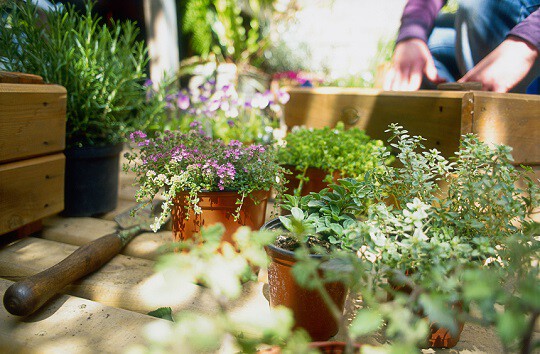
If you take care of them, perennials will come back year after year. These herbaceous plants, like peonies and daylilies, die in the fall and return in the spring. While most annuals last throughout the season, perennials only bloom for a short while but they look fabulous during their once-a-year show. Here are some basic things to know before you start planning and planting.
Take measurements.
Before choosing any flowers or plants, you need to know where you'll be planting a perennial garden and how much space you have within that garden. First, measure the area you've allotted for a garden, then measure any permanent structures, like a pool or porch, that sit in your square footage so you can subtract them from the total.
Know what to plant.
The best perennials are those that are known to thrive in your particular area's growing conditions. Some like yarrow do well with eight hours or more of daily sun exposure, while others such as hosta crave partial shade. Also take into consideration colors, textures, maintenance level and, if you've got wildlife in your backyard, whether a plant is deer-, rabbit-, or squirrel-resistant.
Figure out the best time to plant.
Most perennials can and should be planted in the spring, as this allows ample time for root establishment, says Adam Dooling, the Curator of Outdoor Garden and Herbaceous Collections at the New York Botanical Garden in Bronx, New York. "A decent rule of thumb is to plant summer-blooming and fall-blooming perennials in spring, shortly after they've awakened and once the danger of freezing soil has passed." Inversely, you should plant spring-blooming and summer-blooming perennials in the fall, allowing enough time for the plants to establish themselves before winter. "Your optimal planting season can either be extended or reduced depending on your climate or conditions that year."
Prepare the soil.
Soil is the lifeblood of any garden, so make sure yours is as robust as it can be. Add organic matter such as peat moss or compost to pump it up.
Plant them.
"Water the plant before planting, as dry roots can be brittle and become damaged," says Dooling. Dig a hole larger than the pot you are planting, which allows for better root development. "Once you have dug your hole, backfill the hole slightly so that the plant is set at roughly the same depth as it was in the pot, with the crown just at the surface of the soil." If buried too deep, you risk rotting the crown (the point where the stems and leaves meet the roots).
Water them well, then not so much.
Water your thirsty perennials right after planting and then at least once a week. Keep them well watered for the first month while the root system is being established. After that, water them deeply but less frequently.
Taking care of perennials.
Once they're established, don't fertilize plants until they're two to four inches tall. Wrap the plants around stakes before they become too tall. Deadhead flowers (remove old flower by pinching or snipping off the stem just below the flower's base) to tidy up the garden and encourage other blooms to grow.